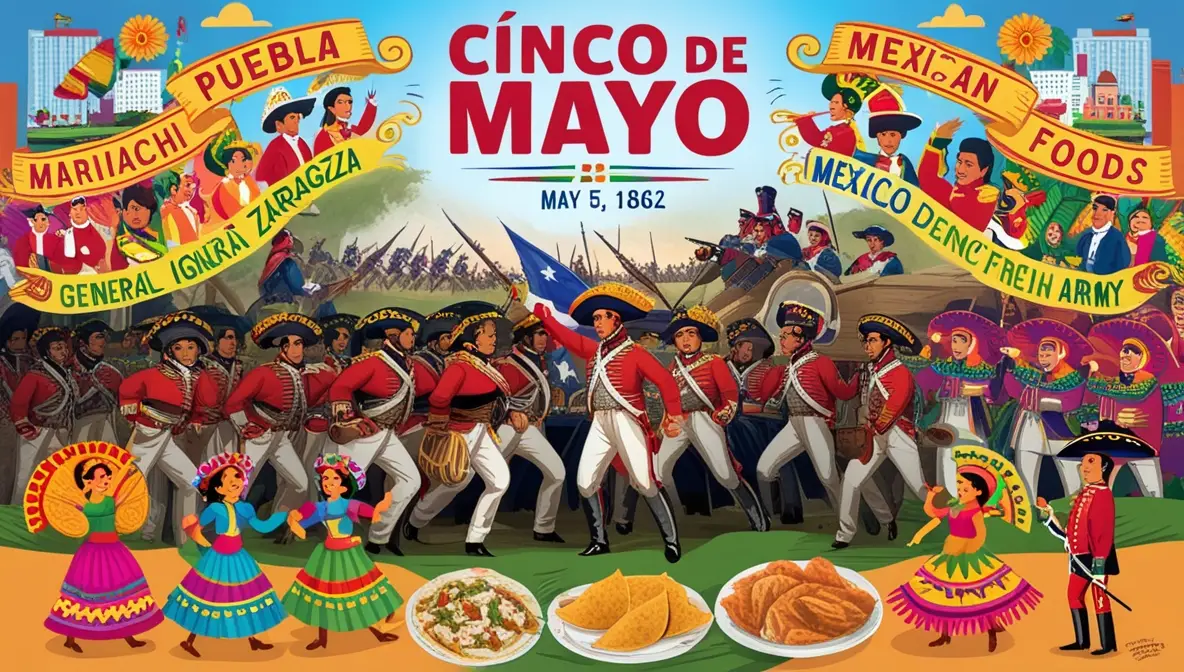Cinco de Mayo
Cinco de Mayo: A Deep Dive into the History, Significance, and Modern Celebrations
The Historical Roots of Cinco de Mayo
Cinco de Mayo, often mistaken for Mexican Independence Day, commemorates the Mexican victory over the French at the Battle of Puebla on May 5, 1862. The Mexican forces, under the command of General Ignacio Zaragoza, were vastly outnumbered by the French army, which was considered the most powerful in the world at the time. Despite this, the Mexican troops managed to defeat the French, marking a significant moment of resistance and pride in Mexican history.

- Monday, May 05 2025
- Tuesday, May 05 2026
- Wednesday, May 05 2027
- Friday, May 05 2028
The battle’s context is crucial for understanding its significance. Mexico, after gaining independence from Spain in 1821, was plagued by political instability, financial struggles, and foreign intervention. By the 1860s, France, led by Emperor Napoleon III, sought to establish a French-controlled monarchy in Mexico. The victory at Puebla did not end the French occupation, but it became a symbol of resistance against oppression and the fight for sovereignty.
The Cultural Significance of Cinco de Mayo in Mexico and Beyond
In Mexico, Cinco de Mayo is primarily celebrated in the state of Puebla, where the battle took place. The day is marked by military parades, reenactments of the battle, and cultural events that honor the bravery of the Mexican forces. Although it is not a federal holiday in Mexico, the day holds significant regional importance, especially in Puebla.
In the United States, Cinco de Mayo has evolved into a broader celebration of Mexican culture and heritage, particularly in areas with large Mexican-American populations. The holiday gained popularity in the U.S. during the 1960s as part of the Chicano Movement, which sought to promote Mexican-American identity and civil rights. Today, Cinco de Mayo is celebrated with festive events, including parades, mariachi music, folkloric dancing, and traditional Mexican foods.
Modern Cinco de Mayo Celebrations Across the United States
Cinco de Mayo has become a major event in the United States, celebrated with a variety of cultural festivities that reflect the rich traditions of Mexico. Cities like Los Angeles, Chicago, and Houston host large-scale events that attract thousands of participants. These celebrations often include:
- Parades and Festivals: Streets come alive with colorful parades featuring floats, dancers, and musicians. Festivals offer an array of activities, from traditional Mexican crafts to educational exhibits on Mexican history and culture.
- Gastronomy: Cinco de Mayo is a showcase of Mexican cuisine, with restaurants and food vendors offering dishes like tacos, tamales, enchiladas, and guacamole. Many celebrations also feature cooking demonstrations and food contests.
- Music and Dance: Mariachi bands and traditional dancers are central to Cinco de Mayo celebrations. The sounds of lively Mexican music and the sight of dancers in vibrant costumes performing folk dances like the Jarabe Tapatío create a festive atmosphere.
- Educational Programs: Many communities use Cinco de Mayo as an opportunity to educate people about Mexican history, culture, and the significance of the Battle of Puebla. Schools, museums, and cultural centers often host lectures, workshops, and exhibitions.
The Commercialization and Criticism of Cinco de Mayo
As Cinco de Mayo has grown in popularity, particularly in the United States, it has also faced commercialization and criticism. The holiday has been adopted by businesses as a marketing opportunity, leading to widespread commercialization that sometimes overshadows its historical significance. Critics argue that Cinco de Mayo is often misunderstood and reduced to a stereotypical celebration of Mexican culture, focusing more on partying and alcohol consumption than on the historical and cultural aspects.
There is a growing movement to reclaim Cinco de Mayo by emphasizing its historical roots and cultural significance. This includes efforts to educate the public about the true meaning of the holiday and to promote celebrations that honor Mexican heritage in a respectful and meaningful way.
Cinco de Mayo is a day that represents much more than a single battle; it embodies the spirit of resistance, cultural pride, and the ongoing struggle for sovereignty. While its significance has evolved, particularly in the United States, the holiday remains a vital part of Mexican and Mexican-American heritage. By understanding and honoring its historical roots, we can ensure that Cinco de Mayo continues to be celebrated in a way that respects its rich cultural legacy.


